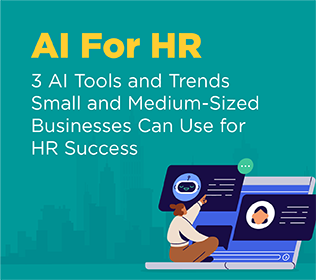
A quick guide for any situation
Performance management is an important responsibility for supervisors and employers. But what are some of the best practices for both positive and negative performance management circumstances? They’re quite similar, and both can lead to more successful outcomes and clarity for both you and your employees. Overall, performance management should be a positive opportunity. Instead of seeing performance management as a difficult task, view it as an open dialogue, and a way to help your employee grow their skills. They are a great way to refocus on positive actions, and it’s especially important to use these conversations as a chance to praise and encourage your hardworking team members. This can also create a more open and constructive workplace culture. Check out the list we put together in conjunction with our HRBP team.
1. Be proactive
When it comes to addressing an employee situation, bring it up immediately! Timely feedback makes a meaningful impact and keeps performance communication relevant. The performance issue could happen again, and it may not get better on its own if you don’t have a conversation about it. In fact, in some circumstances, employees may not know that what they did was not up to performance standards. Get ahead of any potential issues and have a conversation with your employee. Provide guidance to help them understand your expectations and answer their questions about how to achieve the desired outcome. In this way, employees can grow to trust an employer’s sense of open communication, which can help develop company loyalty.
Proactive measures don’t need to be limited to constructive criticism – you should also be proactive about encouraging your employee’s career development! One of the main reasons that great employees start job hunting is because they do not see a career path and the chance for upward mobility at their current workplace. If you don’t start the conversation with your employee, you may inadvertently indicate that you don’t plan on promoting them in the future. Ask your employee where they see themselves going in their career and discuss how their goals fit in with advancement opportunities at your company. This conversation could go a long way towards encouraging your employee and helping them to see what is available to them in the future.
2. Document everything
Keeping notes of both your positive and constructive performance feedback is a vital way of keeping track of an employee’s performance throughout the year. It also makes it easier to develop a plan for improvement if needed moving forward.
When it comes time to work on annual reviews, the process will go much smoother if you have detailed notes about the employee’s performance throughout the year. Be ready to share specific examples of a job well done, or a case when improvement was needed, as these will go further in a conversation than speaking in generalities. You can also encourage your employee to document their own wins so that they can easily complete annual self-assessments if those are performed at your company.
Of course, you should also document any items that required improvement and constructive criticism. If their performance has declined without improvement over the past year, you may need to address it with a Performance Improvement Plan (PIP). Make sure to document this plan, and when reviewing it or any other situation, whether verbal or written, be sure to document its occurrence with date, time, and description with details. It’s best to include specific examples in any notes and keep emails or other written items as further supporting documentation should you need it. Also, be sure to share these detailed plans and communications with your HR representative so that they are looped in should further steps need to be taken.
3. Create goal-driven timelines
Goals are also a great way to kick off a worker’s employment year. Create job-specific goals that are aligned with the organization and your employee’s functional area. You may also set stretch goals, which are goals beyond an employee’s current responsibilities or skills, to help them grow professionally.
And if you need to have a conversation with an employee regarding their unsatisfactory performance, make sure to establish concrete goals with deadlines as well. This will ensure that nothing is left open-ended. It will also confirm that the employee is aware that if their behavior or performance is not changed within the agreed-upon timeframe, there will be consequences.
Tangible milestones, whether intended to improve unsatisfactory performance or to help your employee reach for a promotion, are key when entering a performance management discussion. These milestones give employees something concrete that they can work toward, and without them, a performance management discussion can fall flat and feel too open-ended. Milestones offer clarity to your employees and leave them knowing exactly what your expectations are.
4. Utilize your HRBP for support
Do not wait until you’re ready to terminate an employee to reach out to your HRBP. Your dedicated team of HR professionals is there for support and guidance as soon as you realize that there is a performance concern. In fact, as a PEO partner, your HR team can assist in every aspect of Progressive Discipline and Performance Management. Think of them as your HR Mentor; you are not in this alone! And don’t forget that your HR team can also help if you are considering promoting an employee and potentially looking for their replacement. There are many perspectives that your HR representative can offer to help you think through your decisions.
The last thing to remember is that performance management doesn’t have to always be used for negative performance. In fact, when working towards promotion for an employee on your team, a performance management plan can help them attain that higher role! Goals, deadlines, and documentation can be encouraging and motivating for any employee to strive for what they want and achieve a positive outcome in the end! Performance management might be the key to retaining your best employees and showing them exactly what their future looks like in your organization.




